Although bitcoin was invented in 2009 and picked up speed in 2015, its biggest growth spurt occurred in 2017, and its popularity continues to rise. Recently, bitcoin prices have dipped due to a warning from the U.S. Securities and Exchange Commission. However, the prices have gradually increased again. So what exactly is bitcoin and how is it used?
The Ins and Outs of Bitcoin
In 2009, an unknown person using the pseudonym Satoshi Nakamoto created bitcoin, a cryptocurrency and worldwide payment system. Cryptocurrencies are considered digital currencies. No central authority or government oversees this computer network. Bitcoin can be used with no intermediary, such as a bank. There are no account numbers, names, social security numbers, or any other identifying features connecting bitcoins to users.
What can you do with bitcoin? Use this digital currency to invest, or use it to buy hotel rooms on Expedia, a sandwich from Subway, or Airline tickets on CheapAir.com. Since payments are made with no names or middlemen, bitcoin has become quite popular among criminals who want to move money anonymously.
Users can also earn bitcoins. For example, store and keep track of digital money using Coinbase, which is essentially an online wallet. Some websites will pay you in bitcoins for completing certain tasks. Some people lend their bitcoins and earn interest. Others trade bitcoins at bitcoin exchanges.
Another way to obtain bitcoins is by “mining.” Mining is merely the verification of bitcoin transactions. All transactions are gathered into boxes with a virtual padlock, called “blockchains.” Miners will then run a software program to find a key to open the padlock. If miners find the key, they are awarded 25 bitcoins.
The future of bitcoin is uncertain. Wall Street banks are warning about its dangers, including the fact that there is no public input allowed. Because bitcoin is not regulated, users run the risk of losing them or having them stolen. Additionally, the value of bitcoin significantly changes daily, and there has yet to be any stability in prices.
Bitcoin in HeinOnline
Although this is a fairly new topic in the media, HeinOnline contains hundreds of scholarly articles, Federal Register documents, and several other documents found within multiple databases. To begin researching this topic, conduct a quick search for the word bitcoin using the Full Text tab on the HeinOnline Welcome Page.
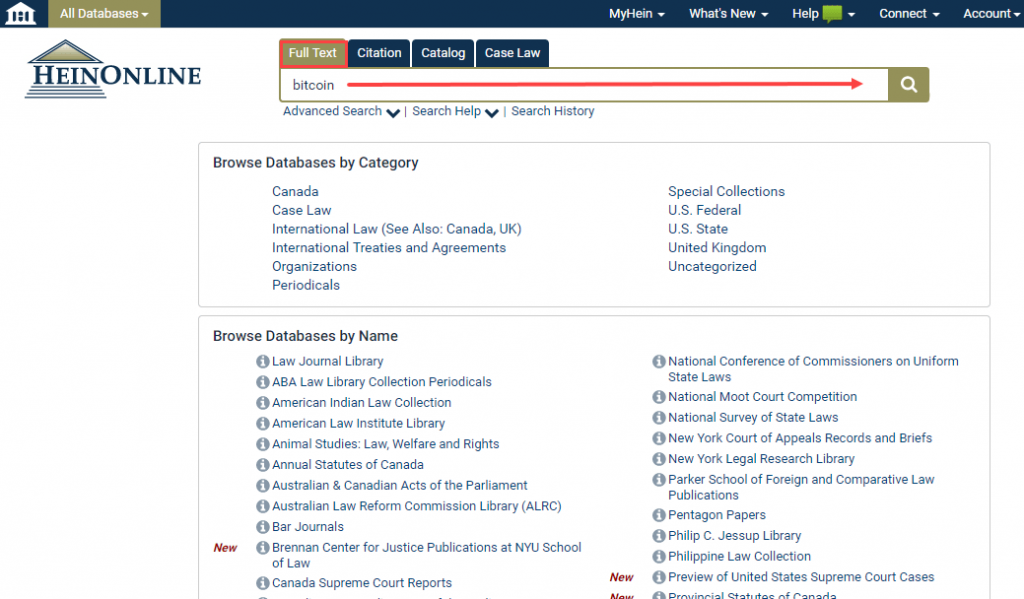
Refine the search results by choosing Federal Register Library from the Collection/Library facet on the left side of the page. Next, enter 2018 into the Date facet.
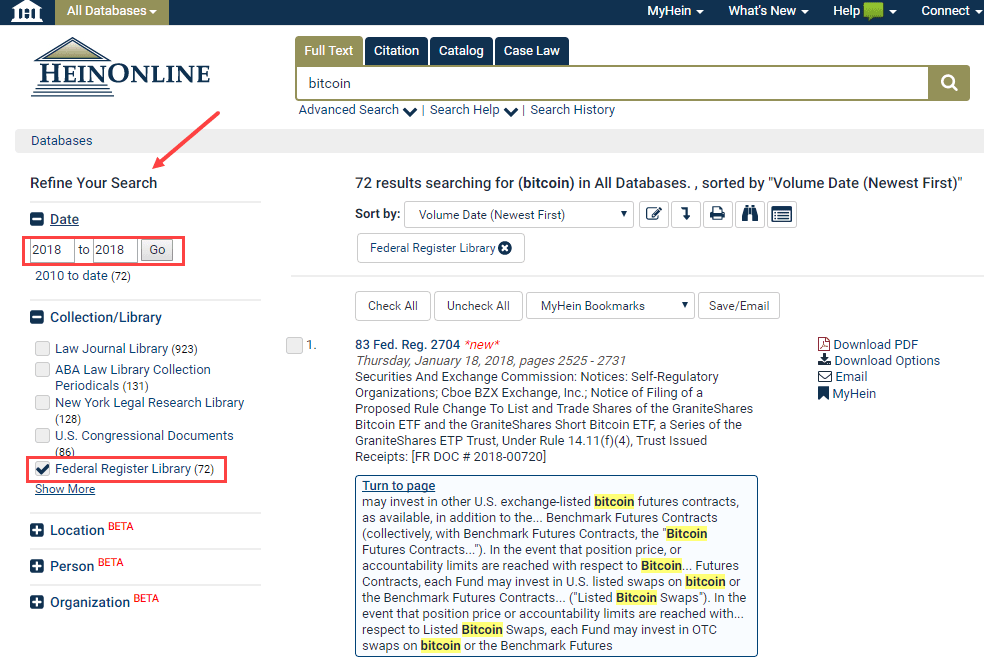
The search results now include 14 Federal Register documents published just this year which mention bitcoin.
Next, let’s construct a search that includes the topic of regulation. For this search, enter the Law Journal Library and use the Full Text tab to perform a proximity search. Enter “bitcoin regulation currency”~10 in the search box and click the search button.

Refine these results further by choosing articles from the Section Type facet and Number of Times Accessed (Past 12 months)from the Sort by option.
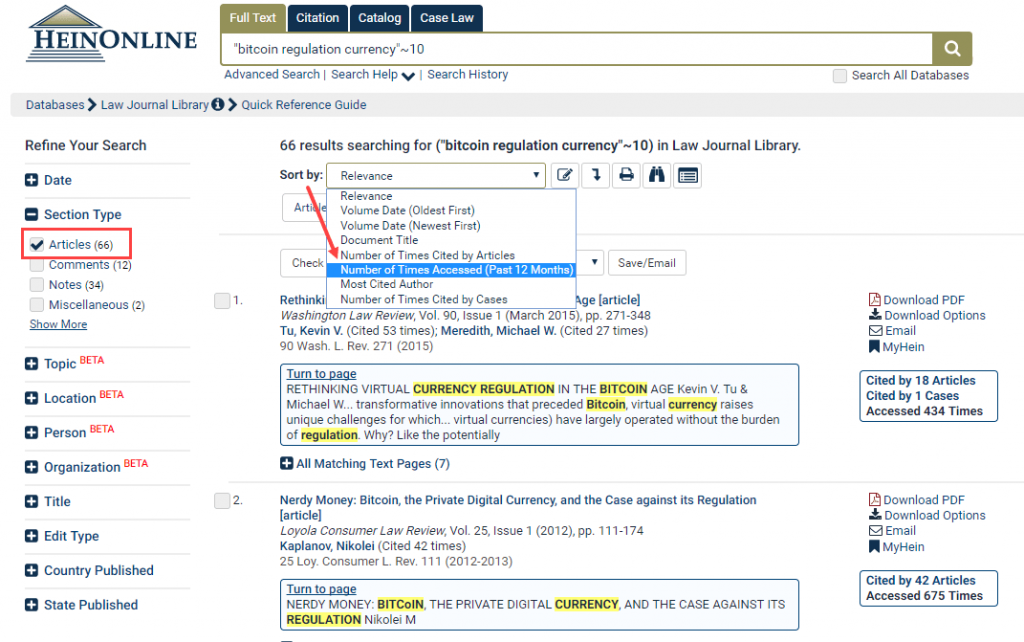
For another example, search for bitcoin AND “digital currency” using the Full Text tab in the Law Journal Library. Within search results, use the Topic and Entity facets to narrow down the number of results. Choose Banking Law from the Topic facet and Number of Times Cited by Articlesusing the Sort by option.

Scroll through results and click on the article titled Bitcoin Financial Regulation: Securities, Derivatives, Prediction Markets, and Gambling. To view similar articles, click the More Like This button. This tool uses a program which finds “interesting words” in an article, as determined by an algorithm that analyzes the article’s text.
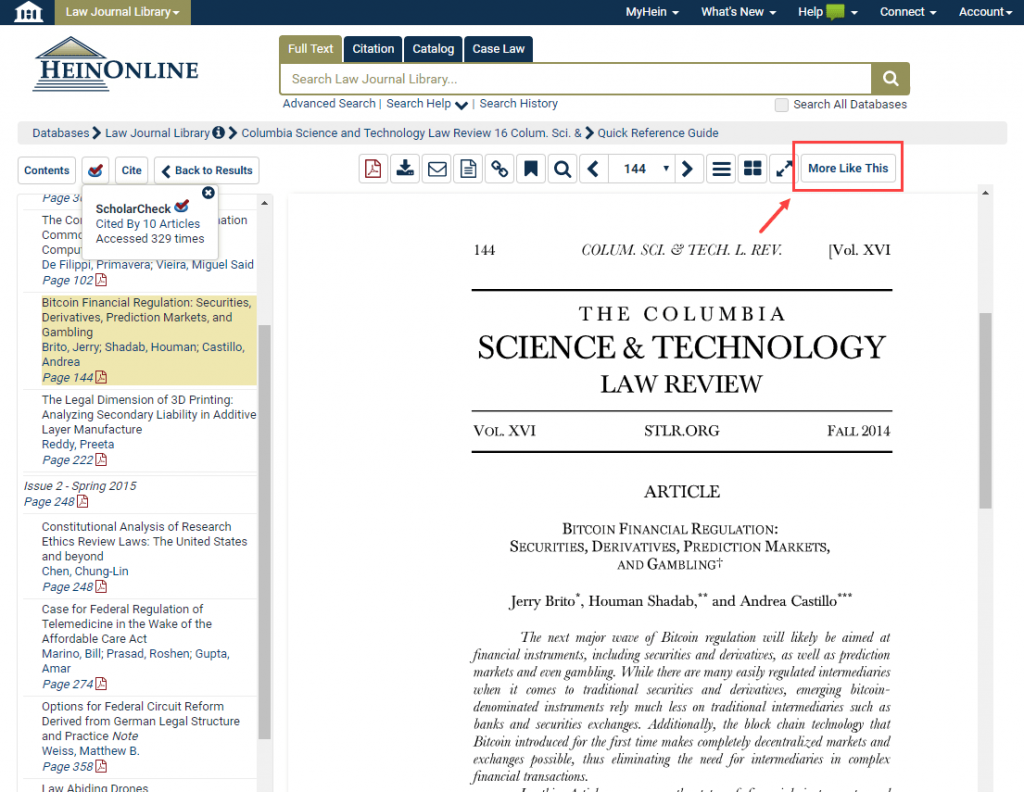
Review the list of similar articles and adjust the boost factor on the interesting words as determined by the More Like This algorithm, or enter new terms to change the scope of the results.
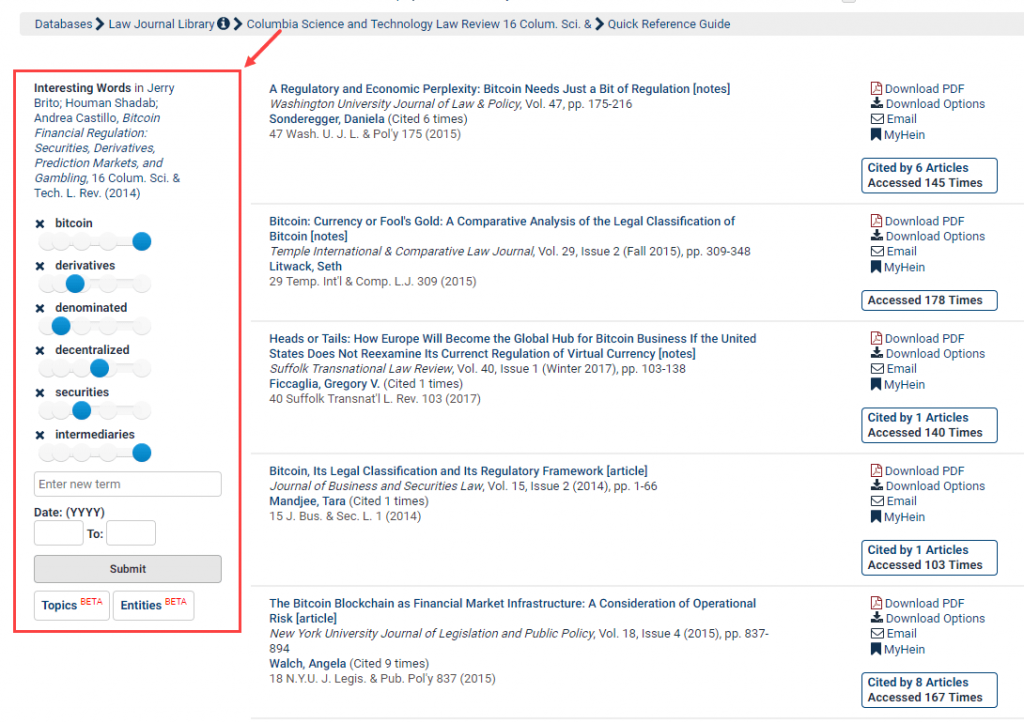
For questions or help constructing searches in HeinOnline, contact our dedicated support team at (800) 277-6995, email us, or chat with us!



